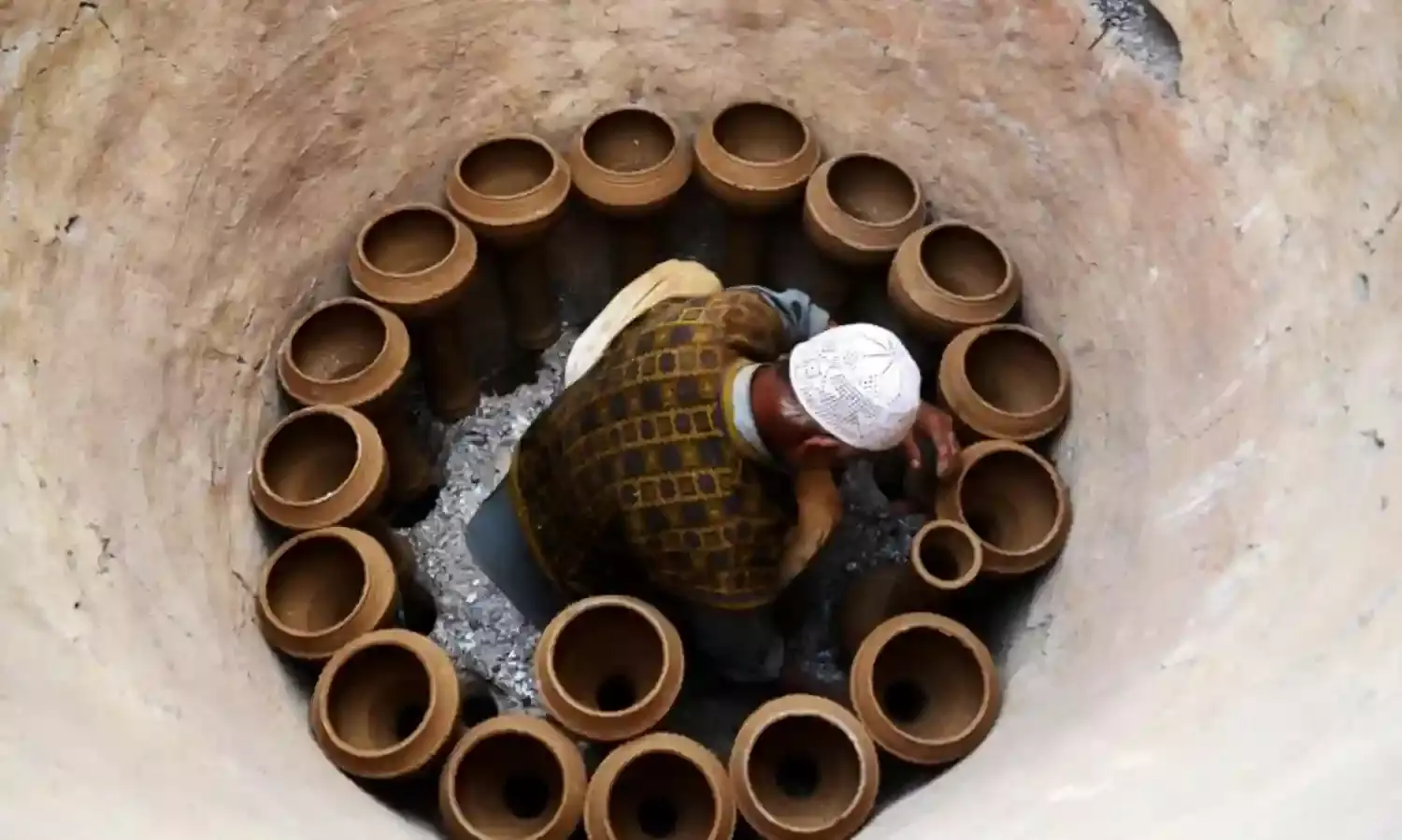The Dying Art of Pottery in Kashmir: A Photo Feature
'In a few years, there will be no potter left'

Pottery, a traditional trade in Kumar Mohalla, Nishat is on the verge of extinction. The plight of potters here is clearly visible as there are only few potters left to continue this trade and many have switched over to other jobs mostly based on daily-wages in agriculture.
"In few years there will be no potter around here in the Kumar Mohalla as there is no demand for earthenwares in the market,” says Abdul Ahad - one of the few potters remaining in the area. "My children are not interested in pottery as they know there are very poor financial returns and the craft itself is on the brink of extinction,” Ahad adds.
Abdul Ahad-- an 80-year-old potter from here -- is one of the last remaining potters, and himself a classic example of the decline in pottery trade. Ahad inherited the pottery craft from his father but his own children remain away from it; they say the returns are too dismal to support the family. Ahad blames the availability of stainless steel and aluminium products for the decline in demand of the pottery. "My children are not interested in the pottery citing poor financial returns and no secure future in this trade,” says Ahad
"The demand for pottery products has fallen in the local markets due to the availability of stainless steel and aluminium products to a considerable extent," says Ahad. "In a few years, there will be no potter around here in the Kumar Mohalla as there is no demand for earthenware in the market,” he adds.
Ahad and other potters in the area say they hope for a miracle - that something will increase demand or at the very least, people will make a conscious effort to buy pottery in an effort to save the art.
Abdul Majeed Kumar, a 55-year-old potter, survives probably among the last potters in the area. With his nimble hands, Majeed brings out an impressive shape and design from a lump of clay in the form of flower vase.
Majeed blames price-rise in the basic material of the pottery products, and indifference of government towards this trade as the prime reasons for the decline in this trade.
"High price of essential material like clay and wood has affected the industry adversely," he says. "There is no support from the government to uplift this industry," he adds.
Ghulam Muhammad Kumar, a 65-year-old potter, prepares raw clay to dry in the sun before its finely shaped into Tumbaknaris and other earthenware.
“I cannot imagine Kumar Mohalla without potters. It's hard for all of us to survive when there is no demand for items we make."
"We are not earning enough to survive with our family members," he adds. "Only Tumbaknaris, a Kashmiri musical drum, and flower vases are in demand," he says.
The potters reiterate that pottery’s future is threatened as modern products have inundated the market - with metallic utensils and other items being the preferred choice for consumers. There was a time when pottery was the mainstay of every kitchen in the Kashmir valley - with beautifully crafted utensils in every family’s home.
Today, the convenience of easy-to-buy and well priced modern items has displaced traditional pottery. Potters say that while this change is inevitable, the government must do more to protect their trade. After all, pottery is integral to Kashmir’s heritage.



